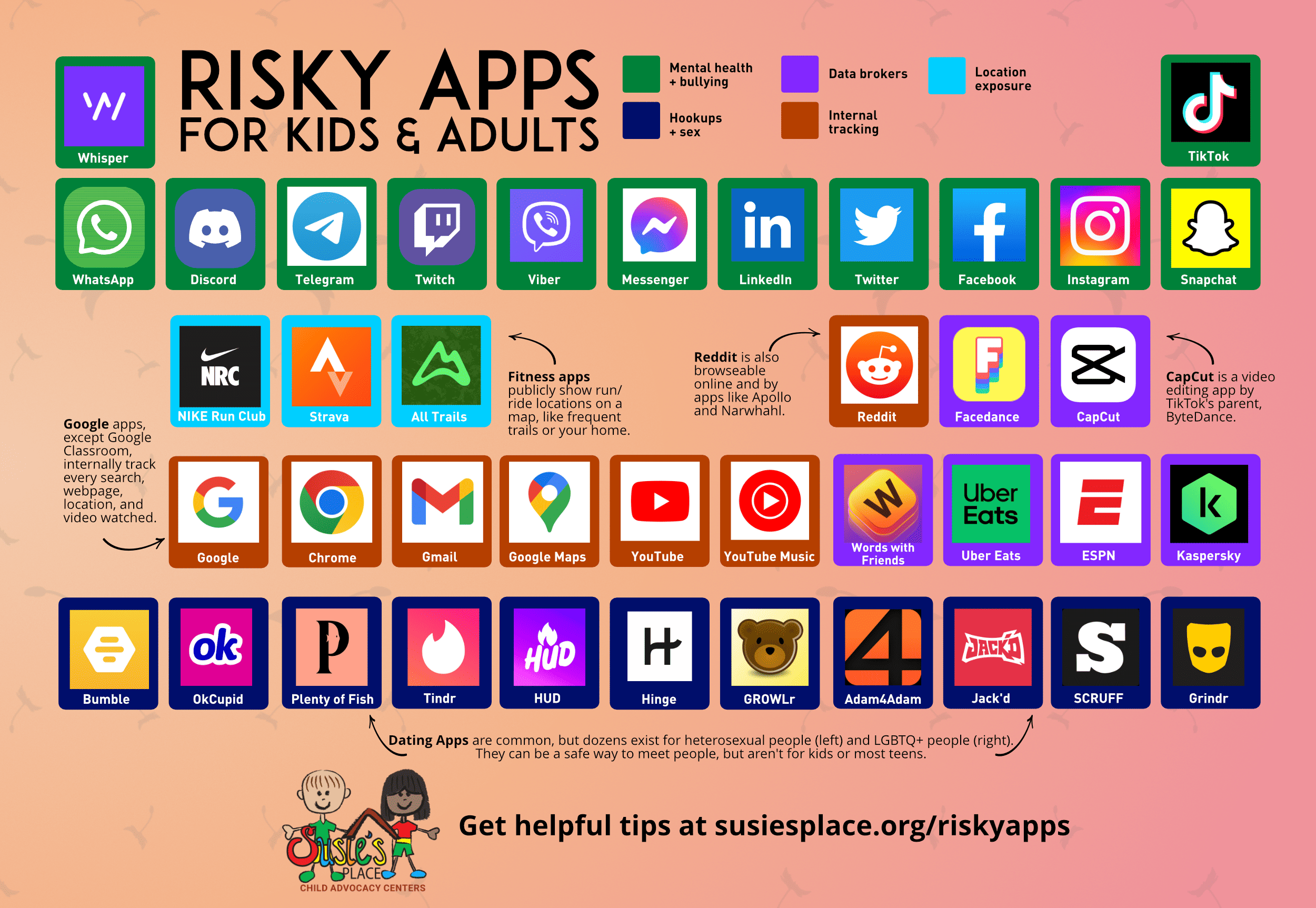This post is part of a three-part series

Teens may inadvertently expose where they live or frequently bike, run, or skateboard when posted to fitness tracking apps.
Apps like Strava, All Trails, Map My Ride, Nike Run Club, and others are great ways to share activity with friends and family. They can encourage healthy competition and offer accountability for completing daily or weekly fitness goals.
But they also show maps of runs, rides, walks, and other outdoor distance activities. This can inadvertently expose patterns — like every Tuesday after school, they go for a run on a nearby trail — or where you live by showing consistent start and finish points.
Tips for adults and fitness apps:
- Check fitness apps you or your family are using aren’t inadvertently posting locations of rides publicly.
- Check that your kids’ friends or connections are people you know or trust.
- Talk to your child about the risks of sharing maps and logs to third-party apps like Facebook or TikTok.
Bullying online and off
Cyberbullying can carry over into school and vice-versa from dozens of messaging apps and social networks. Plus, disappearing messages and videos make investigating or prosecuting instigators nearly impossible.
Tips for helping kids avoid or reduce bullying:
- Remind your kids that what’s posted online, even under “private” or locked accounts, can still be screenshotted and shared.
- Share how information harmlessly tweeted, posted, or shared on social media today when they’re 16 or even 19 years old may harm future job prospects, school admissions, and more.
- Ensure your kids know you’re a safe person to talk to, know how to tell when they’re in over their heads, and know you can help protect them.
- For young kids, consider allowing them only to friend or connect with family members and people you personally know and trust.
- If your child says something that offhand seems unimportant or “normal kid stuff,” don’t dismiss it outright. It might be the first sign a child presents of a larger problem. Ask them non-leading questions like, “Tell me more about this person.”
- Recognize when bullying is out of control and rises to the level of sharing with school administrators, other parents, or even law enforcement if there are threats of death or injury.
Sexual hookups and online dating apps
What can start as a genuine desire to meet someone — even of their own age — can spiral out of their control as older teens 16-19 years old pursue dating apps.
While most dating apps have systems in place to spot users under 18 to protect their own interests, they’re not immediate, and 16 or 17-year-old kids frequently lie about their age and may be able to pass as 18. Know that just because they don’t have an app installed on their phone doesn’t mean they’re not using websites directly, too.
The biggest risk is a young teenager who gets tricked or purposefully falls for someone much older than them.
Tips for parents of older teens engaging in dating apps:
- Talk to your kids about safe sexual health.
- Make sure they understand options for birth control and/or protection.
- Talk about safe ways to date and meet others that don’t involve visiting private residences or unsafe areas, such as school events, sporting events, and other public activities.
- Depending on your child’s sexual identity, you might need to understand apps common among gay men and women and their intended uses. Consider asking trusted relatives or family friends who may be able to relate or advise.
- Talk to your kids about helpful dating advice, such as how to show respect for others.
- Discuss consent for physical touching and how critical it is for everyone to agree on what’s happening, and when and how to stop.


